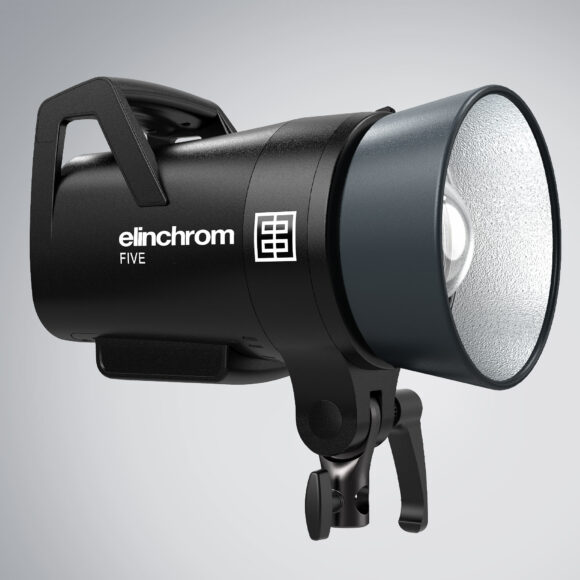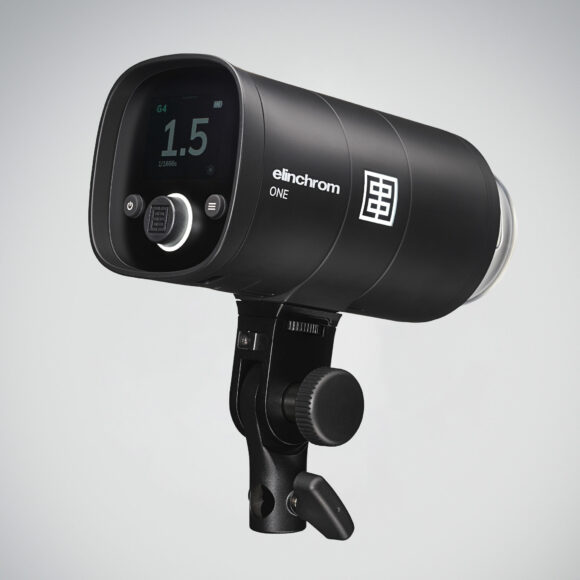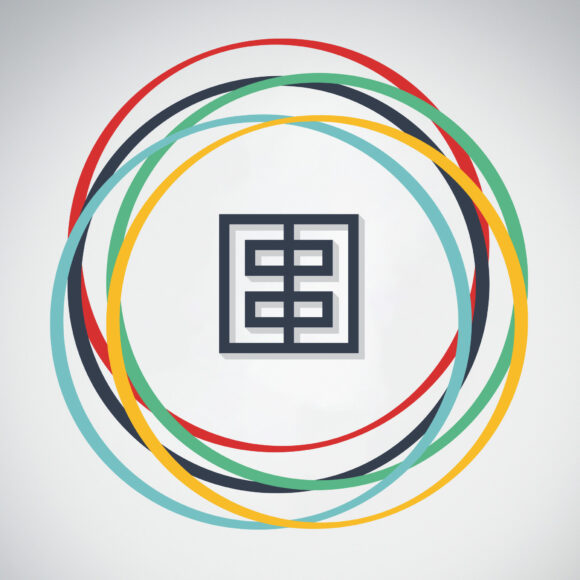Creative photography with Emma Noir
Emma Noir specialises in shooting food products, and over the years has developed a unique and creative approach to making the food we eat every day stand out. Today, Emma shares some of her secrets for making creative setups with the Elinchrom FIVE and Elinchrom ONE.
This photographer began her career more than 15 years ago with a passion for sports photography, before turning naturally to food photography. The pandemic was a good opportunity to develop a different approach to promoting everyday products, such as fruit and vegetables.
Through her various shots, Emma draws attention to the taste and nutritional properties of her products as well as the work of local producers. This approach enables her to celebrate nature and its complex simplicity, while reminding us of the fragile and ephemeral balance of our current ecosystem. For Emma, food photography is a way to raise awareness of the importance of healthy eating and how important it is to preserve our planet.
I worked for a long time with cobra flashes. However, for this project I wanted to experiment with the HSS function on moving subjects. For comparison, I started by working at a conventional sync speed of 1/250, before doing a second test at 1/8000: I thought I might as well go to the extremes to see what HSS offers at its best. In this way, I was able to compare these two settings, while keeping in mind my initial goal of having colour blend with the shadows of my subject.
Gelato project
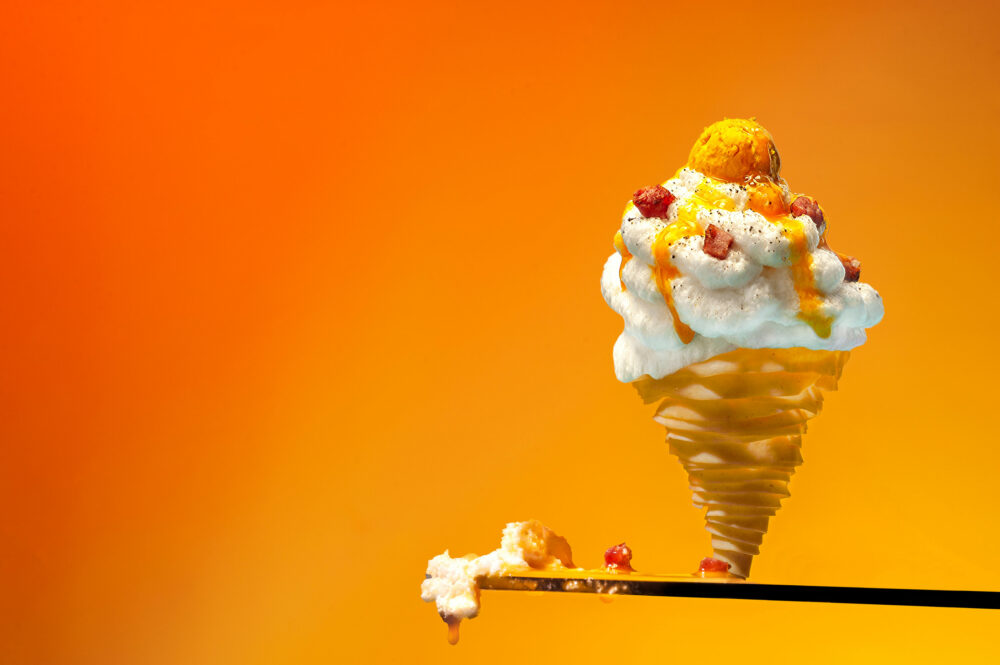
The purpose of this first image is to reinterpret pasta carbonara as a dessert. I wanted to create a feeling of surprise with this. My approach consists in looking at culinary photography in a new way by taking inspiration from the standards of the cosmetic and luxury sectors. Ice cream is a popular and well-known product, and I decided to represent a savoury version reminiscent of pasta carbonara. Everything about this image recalls a classic ice cream, but on closer inspection, it’s clear that something is different.
In the second image I’ve combined materials that are not food but evoke ice, giving the image a richer texture and more movement. For the solid bit representing the cornet, I used wire mesh, a raw material that can be bent and sculpted to get the desired shape. The mesh also has a graphic construction reminiscent of the designs on the cornet.
For the soft bit representing the ice, I chose a silk scarf, a delicate and shapeless textile which lends it some softness and volume. Each time the scarf gets thrown, it takes on a different shape, which creates some interesting surprises when working with movement. One of the things I enjoy most about this technique is letting chance do its thing and letting myself find happy accidents with the material in motion.
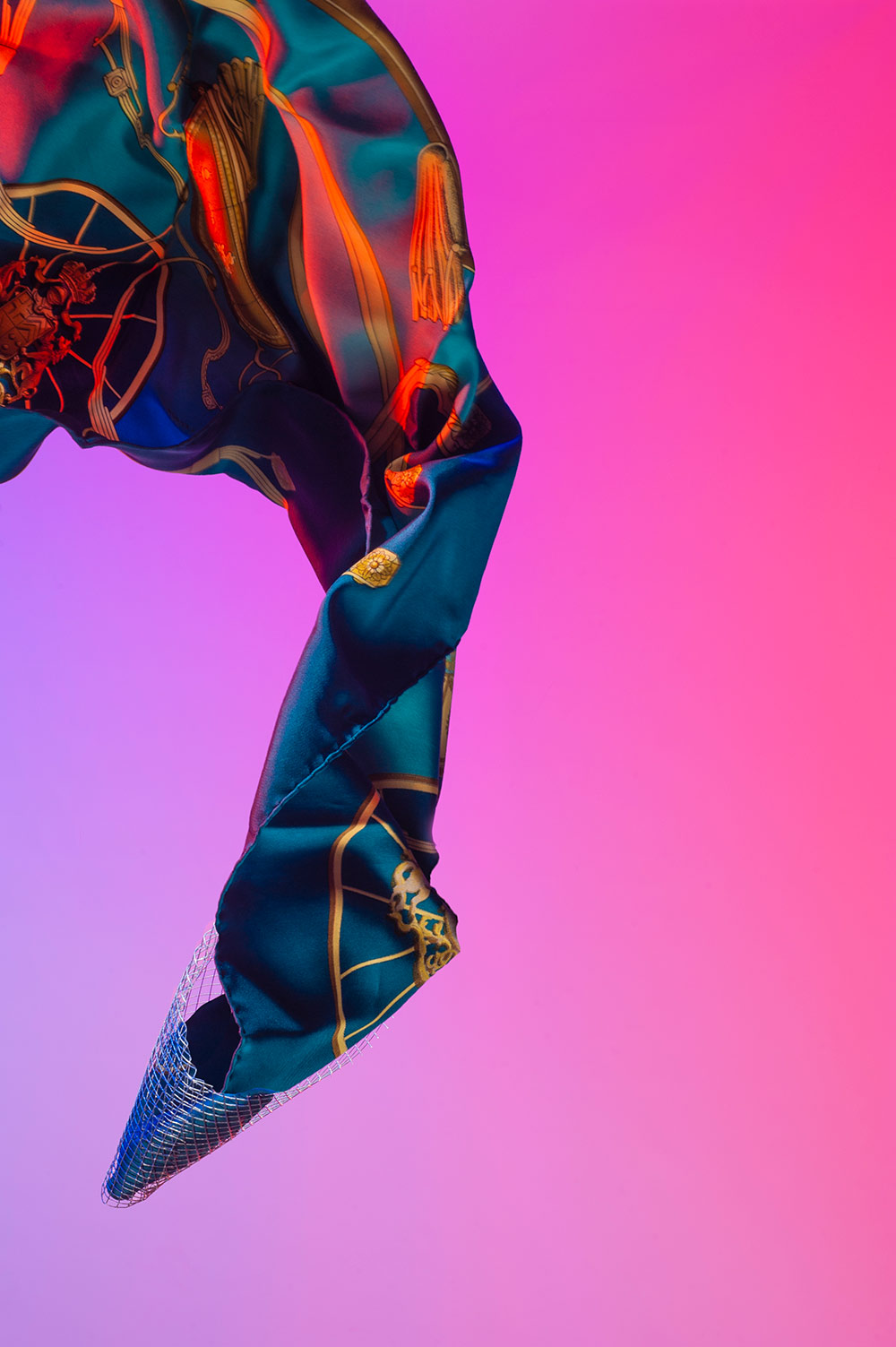
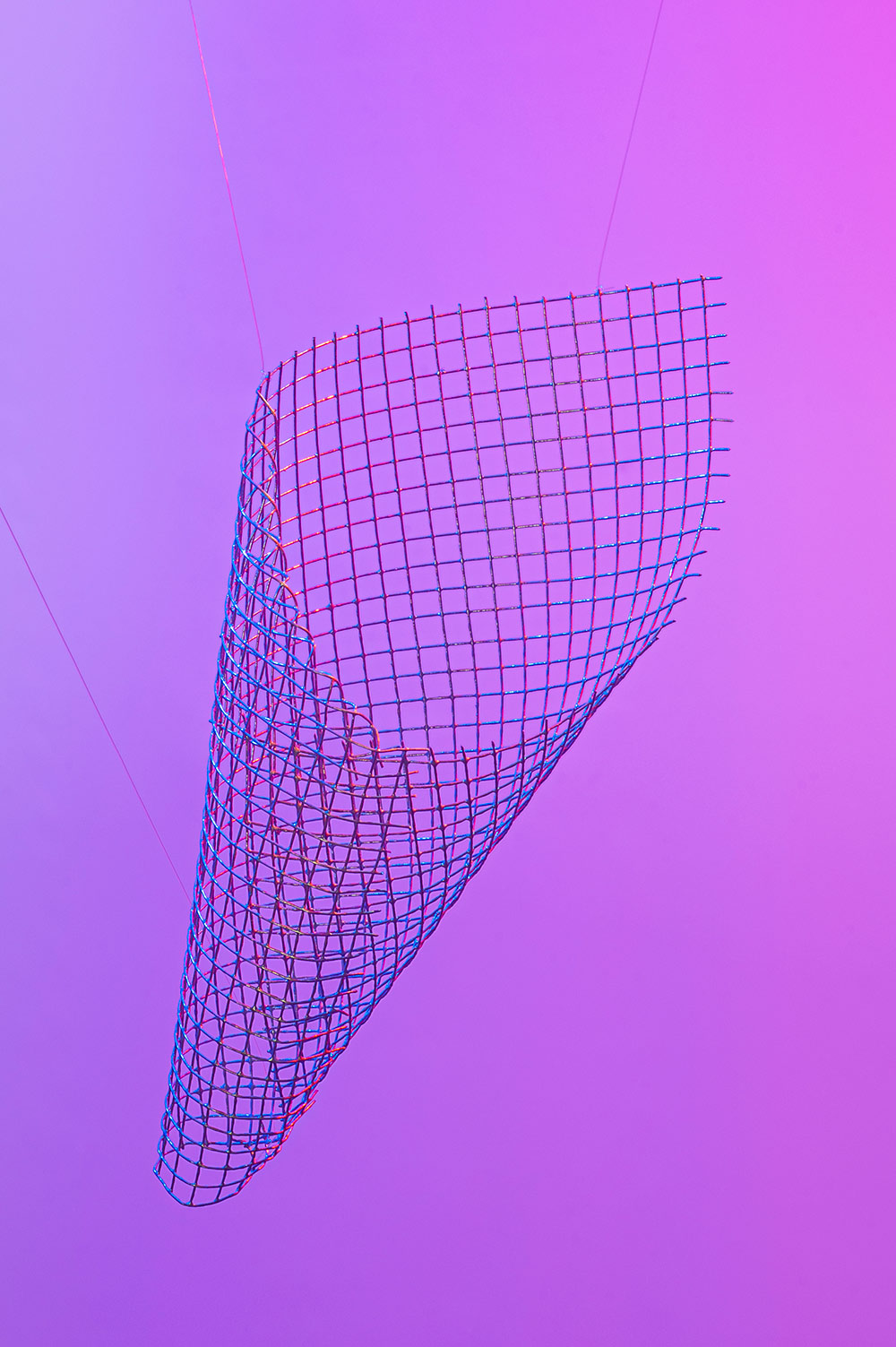
Technical choice of lighting
I chose to use two light sources to illuminate the white background that I set up in my photo studio. I used colour domes to get a nice colour gradient. But I also wanted the light to reflect against the subject to create a unity between the background and the subject, as if the two were one. For this, I used two Elinchrom ONE flashes with a blue dome on one side and a red dome from the Elinchrom OCF Gel Domes Kit on the other.
“The advantage [of the Elinchrom OCF Gel Domes Kit] is that you can create an infinite number of backgrounds with a white backdrop.”
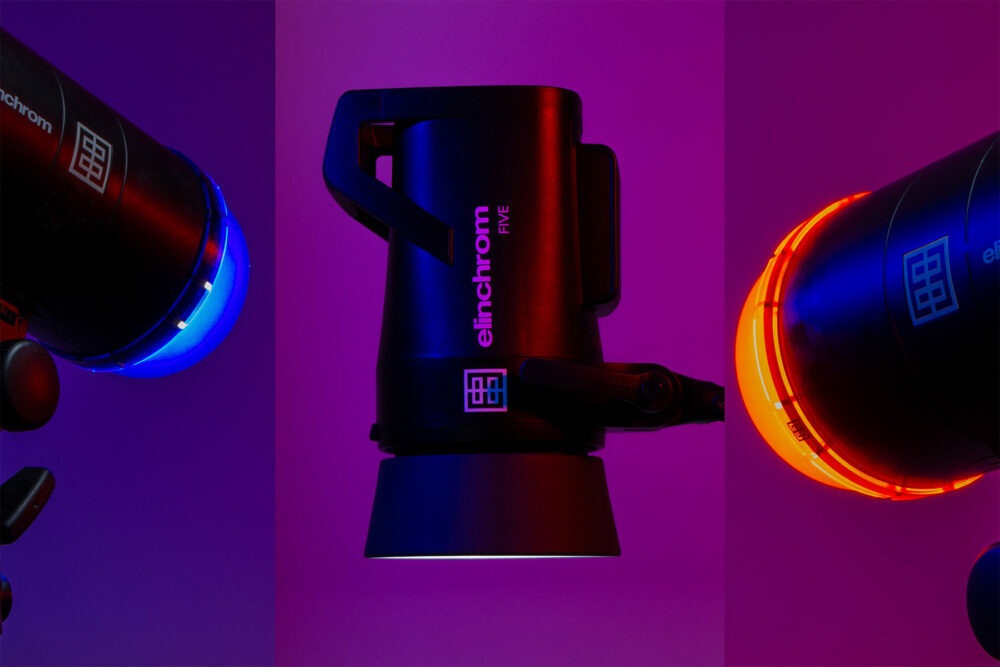
It is interesting because you see that the colours blend together to create a purple colour. Before I got to this point, I did some research by combining different coloured domes, as well as scarves to find the perfect colour for my background. I like to use coloured domes, as they give the image a shiny look. The advantage is that you can create an infinite number of backgrounds with a white backdrop. You can also assemble the domes to get as close as possible to the desired colour.
In this set up, I used the Elinchrom ONEs at almost full power. Then, to retain the subject’s essence, I added a light source with a beauty dish to the Elinchrom FIVE. The beauty dish enabled me to focus and soften the light on the subject without altering the light I’d created with the colour domes. I wanted there to be some colour in the subject’s shadows.
Here, the Elinchrom FIVE’s power was essential: it offers you a wide range of options depending on your needs especially when you want to shoot at ISO 100 with a high shutter speed.
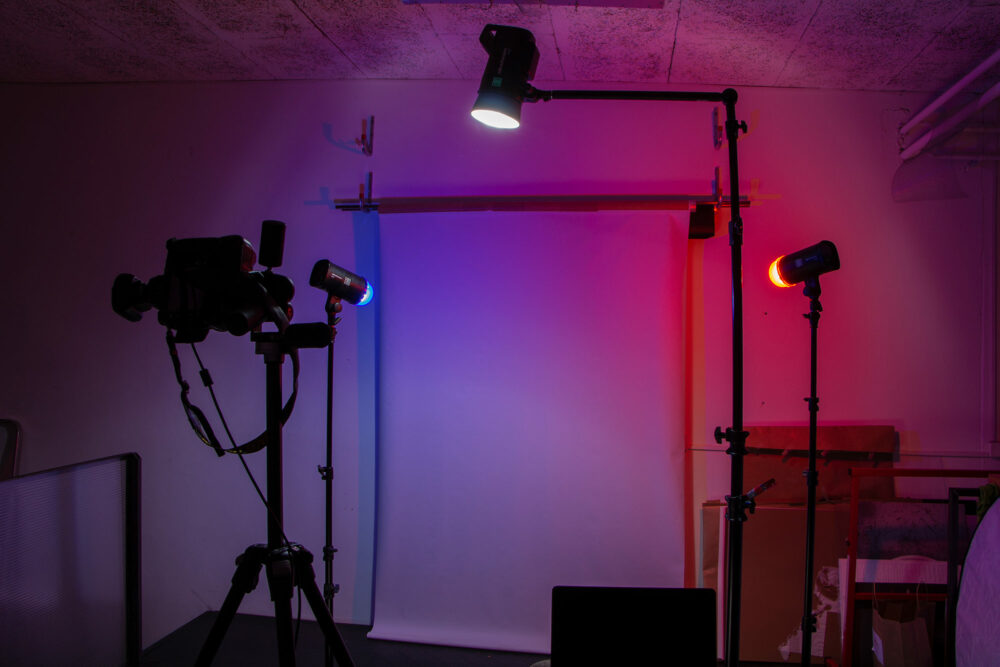
When creating this image, I set my camera to manual mode:
- A shutter speed of 1/250 to partially freeze the movement and create a dynamic feeling.
- And the aperture was F/18 for a large depth of field. I stayed with ISO 100.
- I opted for a 60mm macro lens.
- I also used three direct light sources to take this shot:
- The two light sources in the background are the two Elinchrom ONEs, the flash intensity is set to 4 with the two colour domes.
- The second light source, which is the main source, is illuminated by the Elinchrom FIVE. The flash intensity is 3.5.
- With these settings, I was able to achieve a dynamic and impactful image.
- I then did a second test using HSS at 1/8000.
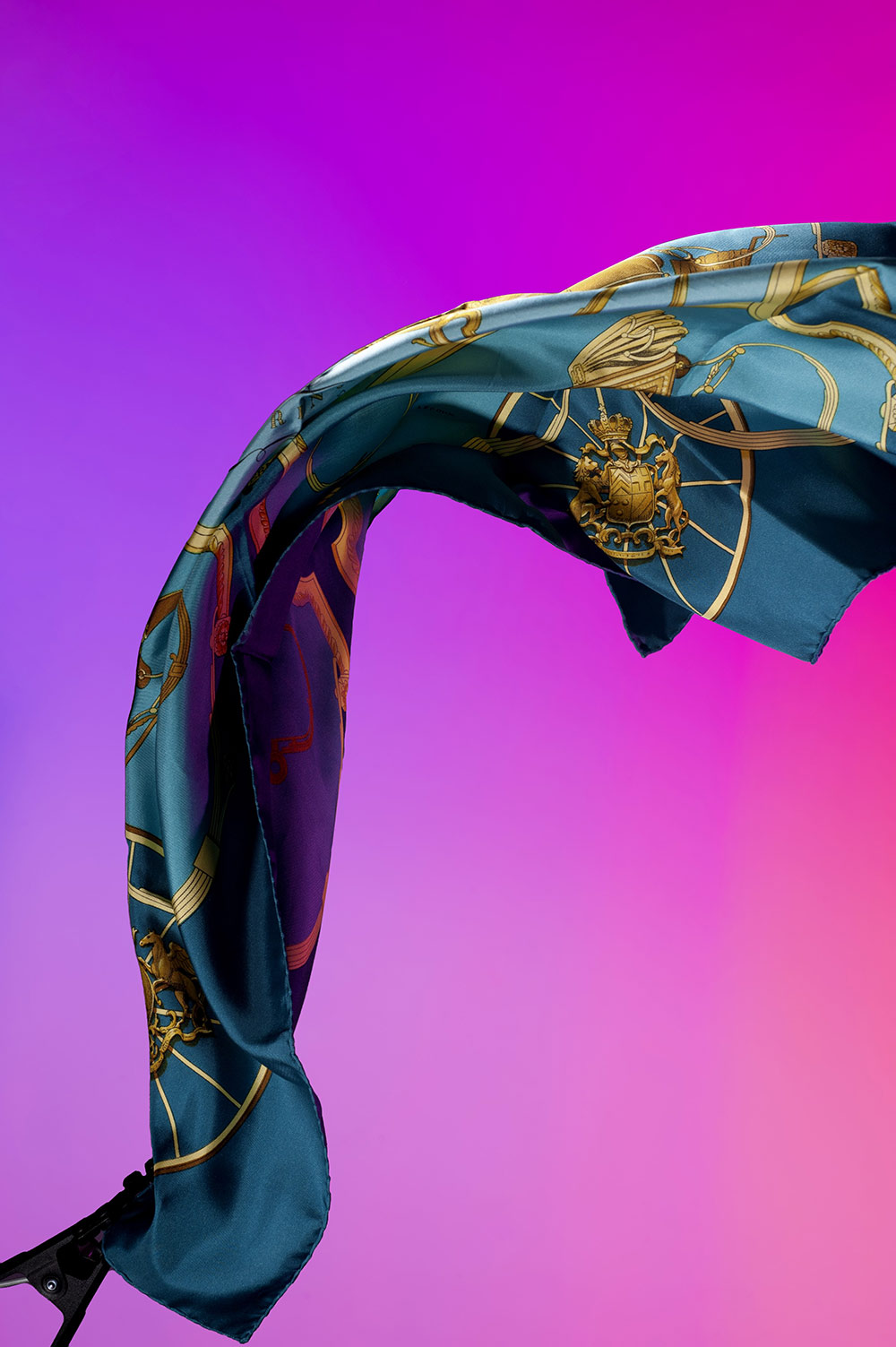
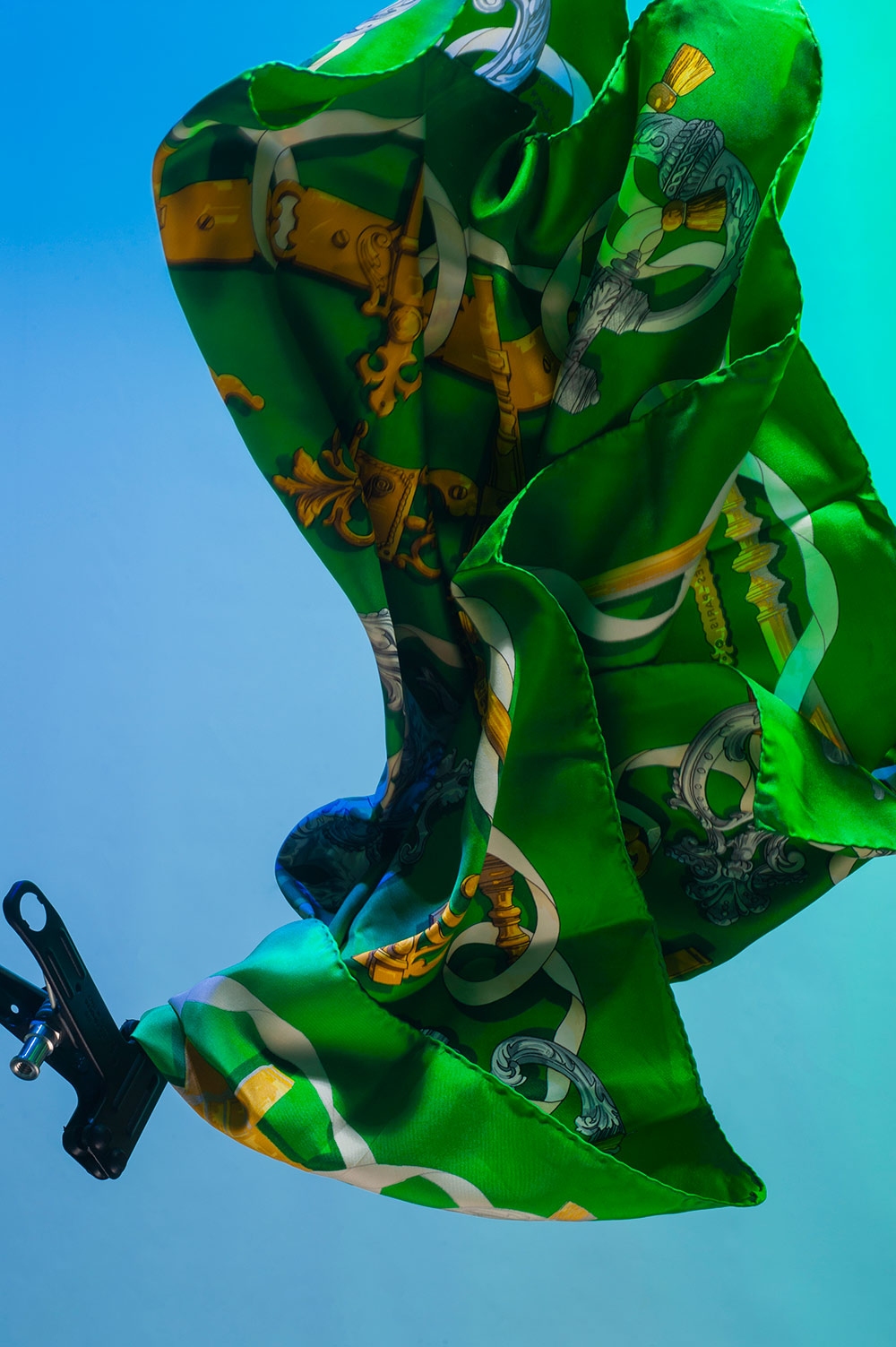
For the second image in HSS mode, I had to change my settings. I photographed the background independently of the subject using ISO 100.
For the subject, I shot at 1/8000, and closed the aperture to 13 with ISO 400. In conclusion, I am delighted and excited with my experiments using HSS mode, especially with the flashes that are easy to take with you and self-powered. I think it’s the ideal compromise between not having cables everywhere in the studio and moving unencumbered around the set-up in the studio and when shooting on location.
Thanks to the Elinchrom Studio app, I saved a considerable amount of time and didn’t have to make as many trips back and forth. Compared to the Transmitter Pro, the app is easier to use when adjusting settings.
“With a ONE and a FIVE, you can create just the right light and finetune it indefinitely”
In conclusion, it is fascinating that just clever use of only two direct light sources on the background (direct light on the background and semi-direct light on the subject) and one indirect light source directly on the subject and a few accessories can completely transform the visual aspect of an object or scene. With the Elinchrom ONE and the Elinchrom FIVE, you can create just the right light and finetune it indefinitely, which means you can emphasize the texture, the shape and the colour of any subject according to whatever technical needs you’re looking for.

